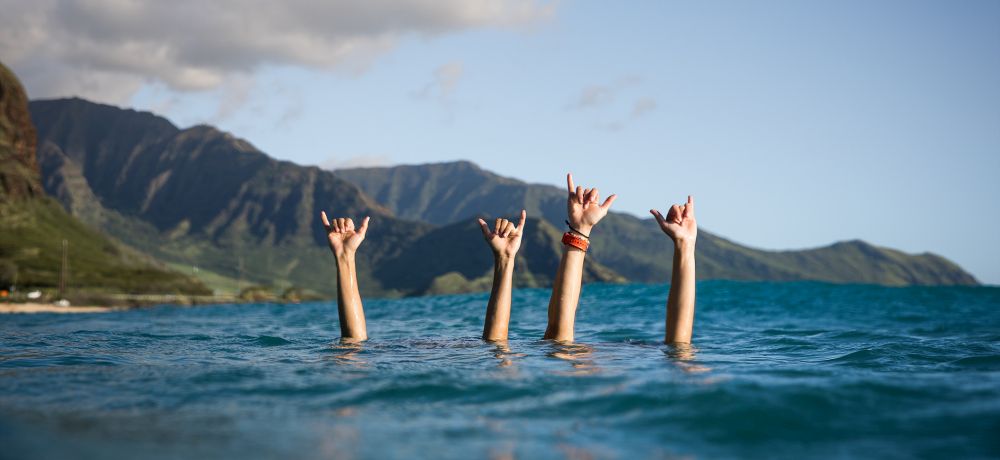
The Shaka Sign: One Way Ticket to Spreading Aloha
The shaka has made its home in the hands of surfers around the globe. I’m here to tell you all about where this curious and friendly hand sign claims its origins and how the shaka continues to be relevant today.
The shaka sign is a hand gesture that – by the general consensus – holds its origins in sweet Hawaii nei. To make it, all you have to do is make a fist and then stick your thumb and pinky out and… voila! A shaka is born. But the shaka is a social animal. It doesn’t like coming out as a solo act, so you typically encounter it accompanied by warm sentiments and friendly greetings such as: Aloha! Howzit?! Shooots! Mahalo! Among others.
*A word to the wise: Do not practice this new symbol in Hawaii, while surfing, skateboarding, participating in general water sports, or in other populous areas unless you ARE READY TO MAKE FRIENDS! Woo wooo!
The shaka transcends language and cultural barriers. It sends a message of aloha, peace, kindness, gratitude, positive affirmation, and chill vibes all around. The shaka sign is truly the symbol of aloha, and if you’re at the edge of your seat to learn why, then READ ON my friends.
The History of the Shaka Sign
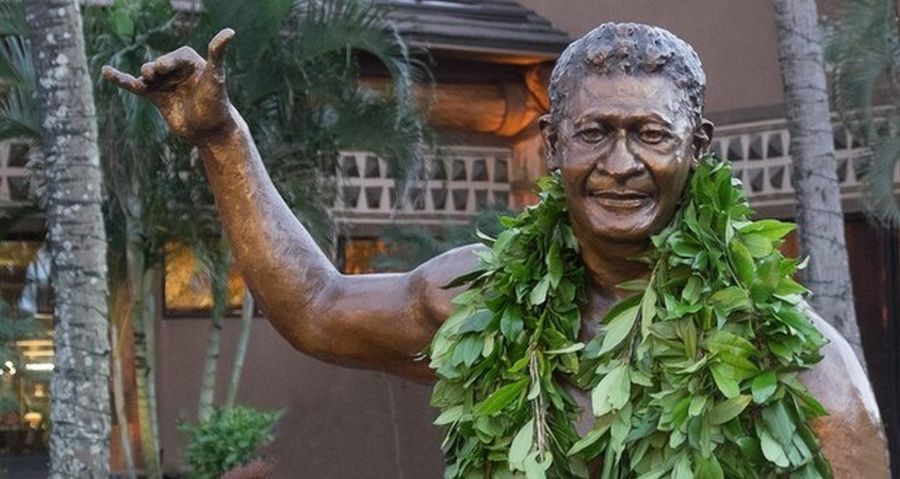
There is no finite answer as to the origin of the shaka, but one story certainly prevails as the frontrunner. It’s the account of Hamana Kalili, a Hawaiian man who lived on the North Shore of Oahu.
Early in the twentieth century, Hamana lost his three middle fingers in machinery accident while working at a local sugar mill. He then became a security guard at a train station, giving his signature wave (shaka premonition… anyone?) to all the passengers.
Local kolohe keiki (naughty kids) who were trying to sneak onto the trains began imitating Hamana’s wave to signal to each other that the coast was clear. Little did they know, this would be the wave that has caused a ripple effect in surf communities all around the universe.
A couple other men are noted for giving rise to the popularity of the shaka sign. David “Lippy” Espinda used a combination of pidgin (the local dialect) and the shaka in local tv commercials in the 70’s, further ingraining the symbol into the culture.
Frank Fasi was a local politician who used the shaka throughout his campaigns. He was the person who formally announced Hamana Kalili as the originator of the shaka during his mayorship.
So although there are several people who are credited with the popularization of the shaka, I think we all know who the real winner is here. So let’s give a big hand to Hamana Kalili, the REAL inventor of the shaka (since, you know, he’s missing half of his own).
Shaka is Worth a Thousand Words
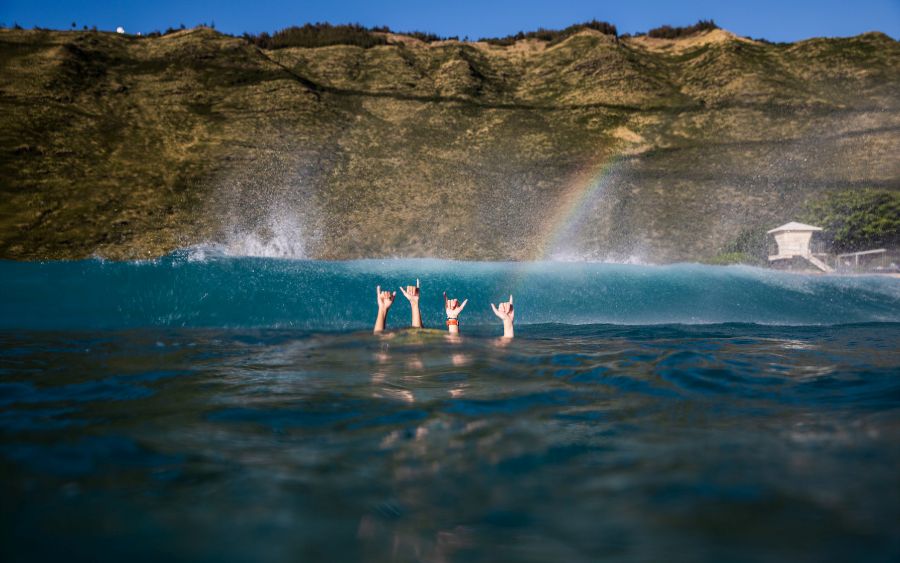
A shaka is like a smile – always pleasant, freely given and received, and riddled with little nuances that can alter its meaning completely.
“…but how to give and receive the right shaka in the right situation?” one might very well ponder. It’s a question that has plagued mankind for years, but fortunately there is a set of unwritten guidelines (well, more or less) to help even the most unacquainted let their shakas hang loose.
Like I mentioned earlier, all shakas begin with the thumb and pinky out while keeping the three middle fingers bent inward. The differences in meaning come from just how loose or tightly those three middle bad boys are curled.
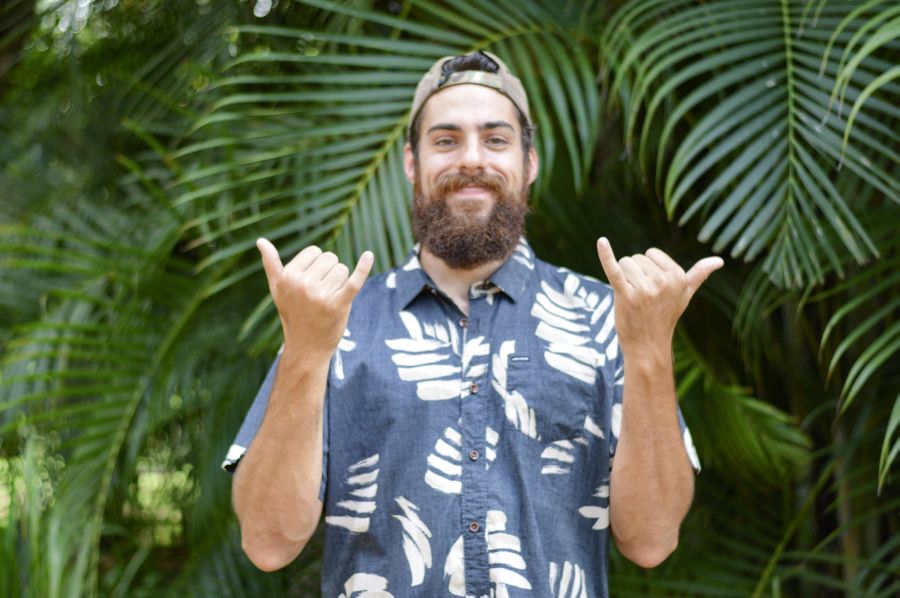
Shall I elaborate? *crowd cheers* Alright alright, I’ll go on.
Tight Shaka
First you have the tight shaka sign. Oh yeah, this baby is filled with meaning, but not quite the coolest kind. This is where the three middle fingers are tightly held to your palm while your thumb and pinky stick straight out in a tense manner. This straight laced shaka is often given by those not as familiar with the coastal culture. The shaka sign means “hang loose” (among many other things), so Let. It. Hang, my friends.

Shaking Shaka
It’s a common misconception that the shaka should always be accompanied by a vigorous shaking of the wrist. Ah ah, it isn’t quite so. Although a writhing shaka offers super enthused vibes to the intended recipient, it’s another sign of a foreign shaka. Wanna look cool? Take a little shake out of that shaka.
Now, on to the main thang, how the shaka is formed in the hands of its most experienced users.
Throw Your Shaka with Style
The coolest, most local of shakas is relaxed. It’s chill. It’s thrown out with elbows that are slightly less bent and fingers that know which position to assume, but take their time getting there. This is the shaka you’ll want to study, practice, and when the time is right, you just throw it out there with the utmost humble confidence you can muster.
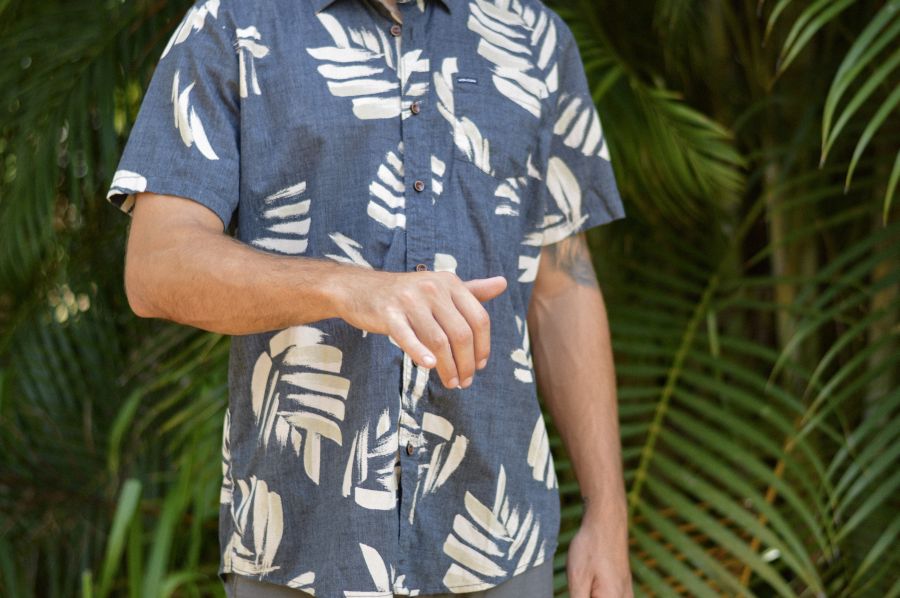
This shaka is truly the symbol of aloha. A cop waving you through traffic? Throw that shaka. I’ll be darned if he doesn’t throw it back (or at least really want to). Construction workers on the side of the road? Same. Thang. (Only response rates tend to be much, much higher.) Someone let you in their lane during heavy traffic? Roll down your window, throw that ‘thank you’ shaka, and both you and the recipient will feel warm tingles of aloha running through the body for ten to fifteen minutes minimum, or your shaka back!
How about with friends? It’s the same thing you guys, it’s that loose shaka that’s really everything – the swiss army aloha, the quintessential hang loose, the end all be all of simple signage. It’s how you smile with your hands, and when accompanied by a smile on your face, it’s made complete.
A shaka can easily reveal one’s level of cultural savvy, but more importantly, it can reveal one’s heart *crowd: awww*. The shaka sign is used to share aloha, or love. It’s given warmly to friends and strangers as a symbol of gratitude, or “shaka mahalo” (thank you), or even just a pleasant “howzit”. The shaka is rarely, if ever, used in a sarcastic manner. It’s kept sincere and pure, just as it should be.
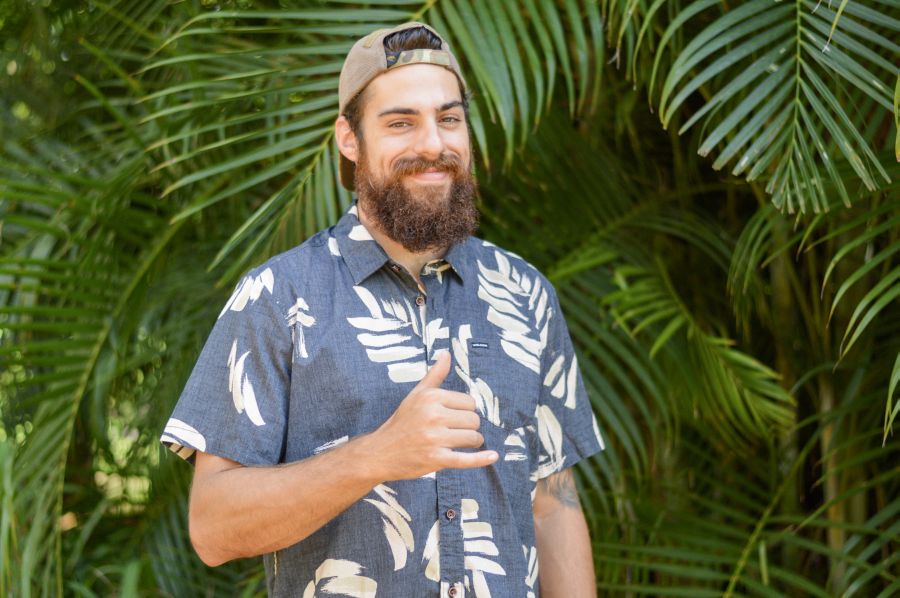
Shaka on Foreign Frontiers
Perhaps surprisingly, the shaka sign is quite cultured. Many people are familiar with the shaka in the “hang loose” sort of terms, but other countries use it to convey different meanings altogether.
In China, the hand symbol for the number six is made the exact same way as the shaka, but kept high and tight. Interestingly, six is a lucky number in Chinese culture. The number means smooth or well-off, which, as a hand gesture, closely resembles the Hawaiian meaning. Coincidence, or is the universe trying to tell us something? *crowd: oooooh*
In Spain, Russia, Germany, Equador, and Chile, the shaka is sometimes used to symbolize having a drink. Not quite hang loose (the pinky is usually parallel to the floor in this one, with the back of the hand turned out), but the vibes are similar, and both are generally well received.
After reading this, hopefully the shaka will find a new home – safe, sound, and in your hands just a little more often – and the world will be filled with a little more aloha.
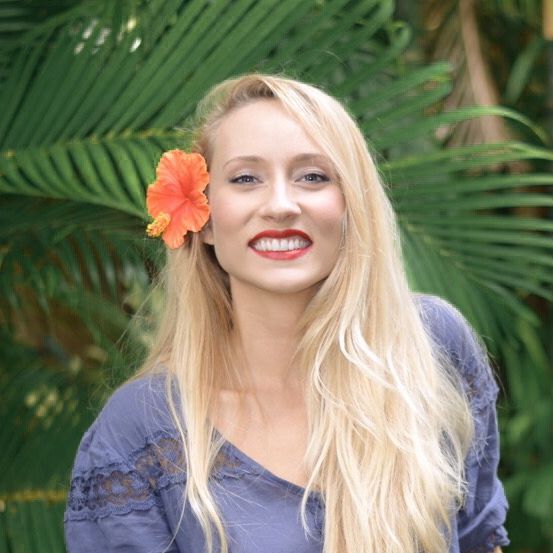
Gabrielle is the founder of Destination Copy, where she writes for businesses within the travel and tourism industry. Surfing is her leisure activity of choice, writing – her greatest intellectual pleasure, and reading – her mental running wheel.








2 thoughts on “The Shaka Sign: One Way Ticket to Spreading Aloha”
🧜♀️🤙🌈🏝💛 Aloha from Southern California. Thanks for spreading the spirit of Aloha with the world.
Thank you, DeeDee! Aloha rules!